
Siderite is a carbonate mineral with the chemical formula FeCO₃. Siderite is usually gray, light yellow or brown, with a glassy luster. It is a weakly magnetic mineral and often coexists with other minerals. The ore structure is complex and the iron content is unstable. In terms of ore dressing methods, due to the difference in the ore properties of siderite, its ore dressing process is also different, and the ore dressing equipment of siderite is also different. Let's take a look at what equipment is commonly used in siderite ore dressing? According to its principle process, siderite ore dressing equipment mainly includes crushing equipment, grinding equipment, sorting equipment and dehydration equipment.
The crushing stage mainly includes crushing and screening, which is to crush the large pieces of ore after mining to a certain particle size to facilitate subsequent sorting. The commonly used processes in this stage are one closed circuit process or two open circuit processes. Commonly used equipment are mainly jaw crushers, cone crushers and vibrating screens.
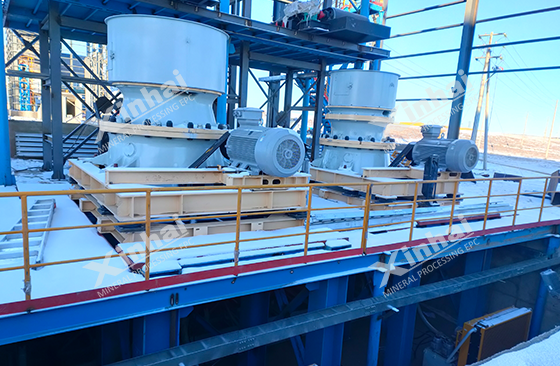
Jaw crusher: suitable for coarse crushing and can handle larger sized ores. It has the characteristics of simple structure, reliable operation and easy maintenance. It crushes large pieces of ore into smaller particles through the extrusion of the moving jaw plate and the static jaw plate.
Cone crusher: used for medium and fine crushing. It can handle ores with higher hardness and has the advantages of large production capacity, high crushing efficiency and uniform product particle size. It uses the rotation of the cone and the extrusion and grinding between the ores for crushing.
Vibrating screen: can be classified according to the size of ore particles. It is suitable for screening ores of various particle sizes and has the characteristics of high screening efficiency, large processing capacity and simple structure. The exciting force generated by the vibration motor causes the screen surface to vibrate, thereby separating ores of different particle sizes.
The grinding stage is divided into two parts: grinding and classification. It is a process of further fine grinding after crushing to fully meet the optional particle size requirements. Generally, one-stage grinding or two-stage grinding processes are commonly used. The material is first ground in a ball mill and then fed into a classifier for particle size classification. Qualified materials enter the next stage, and unqualified materials return to the ball mill for re-grinding. The equipment required for this stage mainly includes grate ball mill, overflow ball mill, rod mill, hydrocyclone and spiral classifier.
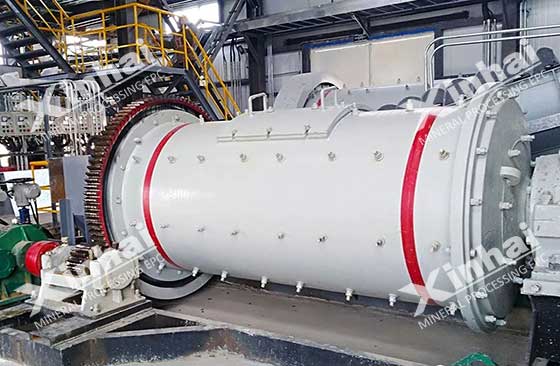
Grid ball mill: mainly used for coarse grinding of siderite and other ores, further grinding the crushed ore to provide materials of suitable particle size for subsequent mineral processing. It is suitable for processing ores with medium hardness or less, and is more suitable for relatively low hardness minerals such as siderite. It can process a large amount of materials. Overflow ball mill: used for fine grinding of siderite to make the ore particle size finer, so as to improve the monomer dissociation degree of the mineral and create better conditions for subsequent mineral processing and separation. It is also suitable for ores with medium hardness or less, and performs well in fine grinding of siderite. The processing capacity may be slightly smaller than that of the grate ball mill.
Rod mill: In the beneficiation of siderite, rod mill is mainly used for coarse grinding or open-circuit grinding of ore, which plays a role in preliminary crushing of ore and adjusting particle size distribution. It is suitable for processing ores with higher hardness, and has a certain processing capacity for some impurity minerals with slightly higher hardness that may exist in siderite. The general processing capacity is slightly smaller than that of ball mill.
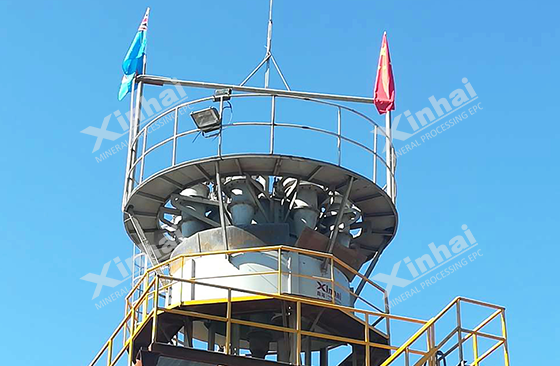
Hydrocyclone: It is mainly used to classify the slurry after grinding, separate mineral particles of different particle sizes, realize the classification of coarse and fine particles, and provide materials of different particle sizes for subsequent beneficiation operations. It is suitable for processing slurries of various particle sizes, and has a good effect on the classification of slurry after grinding of siderite. It can handle slurry with a large flow rate.
Spiral classifier: It is also used to classify the pulp after grinding, separate the coarse particles from the fine particles, and ensure that the pulp particle size entering the subsequent beneficiation operation meets the requirements. It is suitable for processing medium-sized pulp and is widely used in siderite beneficiation. The processing capacity varies according to different models.
The separation stage is the process of separating the useful siderite from other gangue or impurity minerals through physical and chemical means to obtain siderite concentrate. The methods required for this link include gravity separation, flotation and magnetic separation, and the required equipment is gravity separation equipment, magnetic separation equipment and flotation equipment.
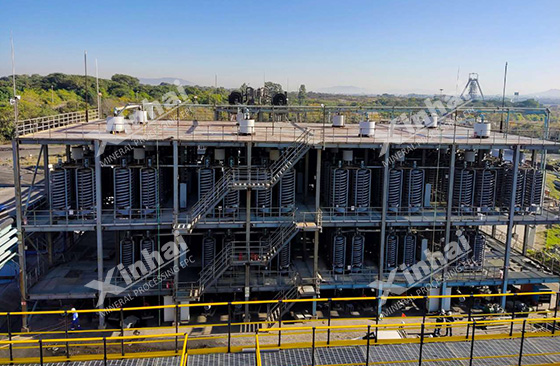
Gravity separation is a mineral separation method that uses the density difference between siderite and gangue minerals to achieve separation under the action of gravity, centrifugal force, etc. The required equipment includes shaking tables, spiral chutes, etc. The former is suitable for processing fine-grained ores and has a better separation effect on minerals with large density differences; the latter mostly processes coarse, medium and fine-grained ores, with a simple structure, small footprint and large processing capacity.
Magnetic separation is a method that utilizes the difference in the weak magnetism of siderite and the magnetic properties of gangue minerals to achieve separation under the action of a magnetic field through equipment such as a weak magnetic separator or a strong magnetic separator. Common equipment includes weak magnetic separators and strong magnetic separators.
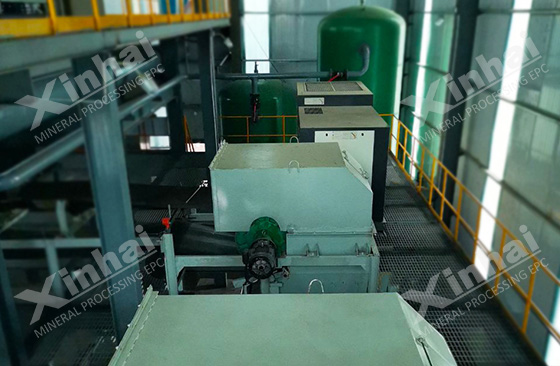
Weak magnetic separator: used to separate weak magnetic minerals, such as siderite. The sorting effect is better for ores with higher iron content. It has the characteristics of low magnetic field intensity and large processing capacity. By utilizing the magnetic differences of minerals, magnetic minerals are adsorbed in the magnetic field and non-magnetic minerals are discharged to achieve separation.
Strong magnetic separator: suitable for sorting weakly magnetic minerals, especially for fine-grained siderite. It has the characteristics of high magnetic field intensity, high sorting accuracy and strong adaptability. Weakly magnetic minerals are separated from gangue minerals through the action of a strong magnetic field.
Flotation is a method of mineral processing that adds flotation reagents to the pulp to make the surface of siderite hydrophobic, float under the action of bubbles, and separate from the gangue minerals. Commonly used equipment is mainly flotation machine and auxiliary equipment stirring tank.
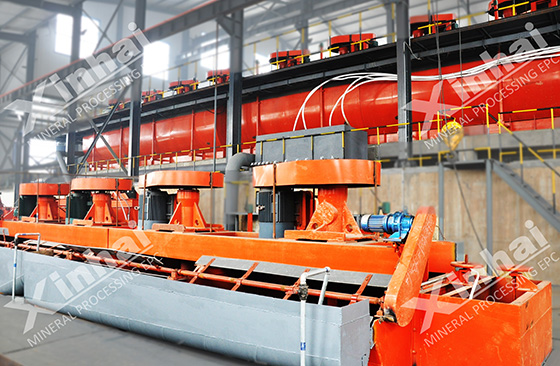
Flotation machine: According to the different stirring devices, there are two types of aerated stirring flotation machine and mechanical stirring flotation machine. Among them, the aerated stirring flotation machine cannot be self-inflated, and needs to rely on mechanical agitators to stir the pulp and blowers to inflate. There are XCF type, KYF type and XCF-KYF combination type; mechanical stirring flotation machine can self-absorb air and pulp without external aeration device. There are SF type, JJF type and BF type.
The above is an introduction to the commonly used equipment in the siderite ore dressing plant. In the actual beneficiation plant, how to choose the equipment depends on the beneficiation process. Therefore, the beneficiation test is carried out first, and the suitable siderite beneficiation process is designed through experimental analysis. At the same time, a complete set of siderite beneficiation equipment is customized according to the process flow.
To find out more about our products and solutions, please fill out the form below and one of our experts will get back to you shortly.